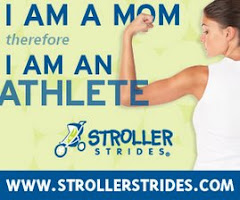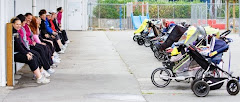
It's a Wednesday and six children aged three and four have huddled in the engineering area at Alderwood House School for a meeting. The teacher has just asked – with respect to the tree house the children began building in the Fall – "What does a roof do and what should it be made of?" They are vigorously debating possible responses.
Everyone agrees that a roof should keep you dry, and that it should be a triangle "because a triangle is the strongest shape", but how to build it? "Umbrellas?"… "They aren't big enough." "Paper?"… "But it will get wet." "Wood?"… to this, there is animated response. Wood seems like a good idea, but there's a problem: "Wood comes from trees, but we can't cut down trees because it's bad for the environment." A wind and snow storm has liberated the large alder tree in the back yard of several branches overnight, providing the children with the idea, and materials, for their solution to the roof problem. "We could use sticks." But will sticks keep you dry? "We can tie them together to make a roof…." With what? Remembering the September atelier exploration on sticky things, they find their solution: "Tape!"
The group sets about gathering sticks, and then connecting them with different types of tape.
Tomorrow, they will test the tenuous stick-structure to determine the "best" tape to use on the roof. Packing tape? Green tape? Duct tape? Each will be tested against the elements overnight as it is placed on top of the partially-completed tree house they have independently designed and built over the last two months.
Inspired by the schools of Reggio Emilia, Italy,
Alderwood House was built in 2008 with the goal of creating a functional yet beautiful space for its 37 students aged 18 months to 5 years. Reggio-inspired schools place great emphasis on the environment-as-a-teacher, and consequently, on the importance of a beautiful and welcoming campus in which the children can independently explore and learn.
The idea of the "100 languages of children" infiltrates the classroom: children are believed to have over 100 ways of expressing and exploring, and the school environment supports mastering any and all of these languages. As artistic expression offers so many languages – sculpture, painting, sketching, 3D, mixed-media, graphic design, film and photography, to name a few – the atelier is a central space for learning and complements the more academically-focused areas such as the research lab, writing centre and library.
The tree house project is an example of the inquiry-based learning that occurs within the program, where children are believed to be capable enough to set the course and so their interests drive the curriculum. This approach deeply engages children in their work, allowing learning to become more meaningful, and encouraging children to create and achieve far more than is typically expected. At Alderwood House, the traditional learning areas of reading, writing, math, motor development, biology and botany are woven into the day by the team of five teachers, two atelieristas and chef. Combined with the problem solving, social development, creativity and scientific method encouraged through projects, children are exposed to a well-rounded and exciting curriculum.
Top schools within North America have begun the migration to include elements of Reggio, following the example of Brick Church School in Manhattan and Boulder School, Colorado. Reggio Emelia's success in developing confident, capable, well-rounded children is now being emulated here in British Columbia. Learn more about registering your child at
http://www.alderwoodhouse.com/.
 Calling all expecting moms!
Calling all expecting moms!






